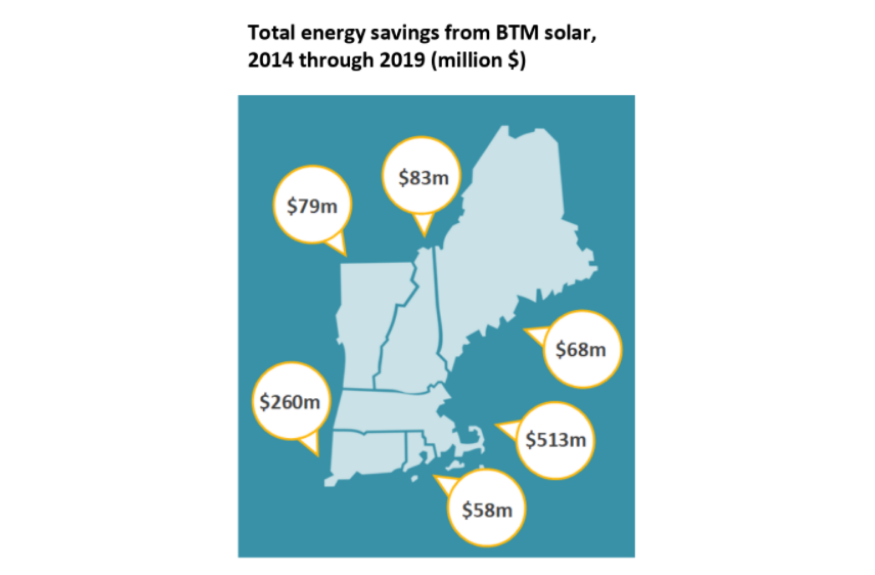
Newly available data demonstrates the enormous benefit of local solar power to everyone in New England. From 2014 to 2019, small-scale solar in New England saved utilities and their customers more than $1.1 billion in wholesale electricity costs. Notably, these savings were enjoyed not only by people with solar, but everyone with an electric bill.
In July 2020, ISO New England, the regional grid operator, published for the first time detailed data about the amount of electricity produced every hour by the thousands of small, local solar installations throughout the region. Analyzing this data, a new report from Synapse Economics, the Boston-based energy consulting firm, reveals that local solar produced 8,600 gigawatt-hours of electricity, enough electricity to power more than 1 million New England households for a year.
Energy cost savings accrued in two ways. First, on the hottest, sunniest days, locally-produced renewable energy met a sizable percentage of the region’s peak demand, directly reducing the amount of energy utilities had to purchase. Decreased demand for electricity during peak periods also had a deflationary effect on energy prices. Put simply, “producing renewable energy locally means that utilities don’t have to purchase as much energy to meet peak demand, and what they do purchase is less expensive than it would be with higher demand,” explained Pat Knight, economic analyst at Synapse Energy Economics and lead author of the report. “The new data from ISO-NE clearly shows that local solar has not only lowered utility bills for everyone, it has also reduced the public health and climate impacts of fossil-fuel pollution.”
From 2014 to 2019, the clean electricity from small-scale solar reduced climate pollution by 4.6 million metric tons, the equivalent of taking 1 million cars off the road for one year. Nearly every state in New England has enacted legally-binding climate pollution reduction requirements. This new study demonstrates that local, renewable energy contributes meaningfully to achieving these climate commitments.
- Full report, Solar Savings in New England, December 2020, and summary slides.
- Factsheets for New Hampshire, Massachusetts, Vermont.







 The team at Encore Renewable Energy® is proud to be certified as a B Corp, joining over 3,500 other businesses worldwide who also share a commitment to social and environmental performance, accountability and transparency.
The team at Encore Renewable Energy® is proud to be certified as a B Corp, joining over 3,500 other businesses worldwide who also share a commitment to social and environmental performance, accountability and transparency.